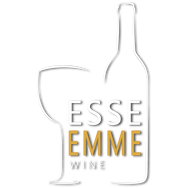Exploring the World of Wine Stories and Traditions to Know
Posted by ANDREEA DUMITRU

Wine is more than just a drink: it is a window into the culture, history and traditions of a people. In this journey we will explore the origins of wine, winemaking techniques, the most famous wine regions and much more. Prepare to discover a fascinating world full of stories to tell.

Key Points
- Wine has ancient origins dating back thousands of years.
- Italy is one of the richest nations in wine varieties, with regions such as Tuscany, Piedmont and Sicily at the forefront.
- The winemaking techniques combine tradition and innovation, creating unique and high-quality wines.
- Each region of the world has its own characteristic wines, influenced by the climate and the soil.
- Pairing the right wine with food can enhance the flavors of both, creating an unforgettable dining experience.
The Origins of Wine: A Journey Through Time
The birth of viticulture
The vine plant, or Vitis vinifera, is one of the oldest plants cultivated by man. Its origins date back to about 6,000-8,000 years ago, in the regions of the Caucasus, Anatolia and the Middle East. Here, the first agricultural communities began to cultivate vines and produce wine, giving rise to a tradition that would spread throughout the world.
Wine in ancient times
Wine has accompanied the history of humanity since the most remote times. The ancient Egyptians, Greeks and Romans have all played a fundamental role in the development of viticulture. In particular, the Romans contributed to the spread of viticulture throughout the Mediterranean basin, improving the techniques of cultivation and wine production.
The Role of Monks in the Middle Ages
During the Middle Ages, monks played a crucial role in the preservation and development of viticulture. In monasteries, monks cultivated vines and produced wine not only for liturgical consumption, but also for trade. Thanks to them, many of the winemaking techniques and grape varieties that we know today were preserved and improved.
Italian Wine Regions: A Heritage of Diversity
Italy is famous for its extraordinary variety of wines, each with unique characteristics that reflect the diversity of the territory. 93% of the typical national productions and 79% of the most valuable wines are born in Italian municipalities with less than five thousand inhabitants, a heritage of taste and tradition that makes each bottle special.
Winemaking Techniques: Tradition and Innovation
Fermentation and refinement
Fermentation is the heart of winemaking. During this process, yeasts transform the sugars in the grapes into alcohol and carbon dioxide . There are two main types of fermentation: alcoholic and malolactic. Alcoholic fermentation is the most common, while malolactic fermentation occurs after the first and serves to reduce the acidity of the wine, making it softer.
Refinement, on the other hand, is the period in which the wine rests and matures. It can take place in different containers, such as steel, cement or wood. Each material gives the wine unique characteristics. For example, the use of oak barrels adds spicy and vanilla notes.
The use of barriques
Barriques are small oak barrels used for wine aging. This method was introduced by the French and revolutionized the world of wine. Barriques allow for controlled micro-oxygenation, which helps stabilize color and develop complex aromas. In addition, oak wood releases tannins and aromatic compounds that enrich the wine's profile.
Modern winemaking techniques
In recent years, winemaking has seen the introduction of numerous technological innovations. Among these, the use of concrete and ceramic containers is gaining popularity. These materials allow for micro-oxygenation similar to that of barriques, but without adding woody aromas. In addition, the use of advanced technologies for temperature control during fermentation and aging ensures consistent and superior wine quality.
A crucial innovation was the introduction of glass as a material for wine bottles, which allowed for longer storage and the ability to appreciate the color of the wine.
In short, winemaking is an art that combines tradition and innovation, allowing the creation of high-quality wines that reflect the territory and the passion of the producers.
Wine in the World: A Global Panorama
Start your journey to discover international enography, a world where the passion for wine and geography merge in a marriage of flavors and cultures. We are excited to share this adventure with you and give you the keys to better understand the extraordinary world of wine.
France: The Kingdom of Wine
France is often considered the home of wine. Its wine regions, such as Bordeaux, Burgundy and Champagne, are famous throughout the world. French wines are known for their quality and variety, thanks to a favorable climate and a long winemaking tradition.
New World: United States and Australia
New World wines, especially those from the United States and Australia, have gained popularity in recent decades. California's Napa Valley and Australian wine regions such as the Barossa Valley produce high-quality wines that rival those of Europe.
Emerging: Wines from South Africa and South America
South Africa and South America are emerging as major wine producers. Countries like Chile and Argentina offer excellent wines at competitive prices. The diversity of terroirs in these regions contributes to the creation of unique and interesting wines.
Food and Wine Pairings: The Art of Enhanced Flavors
Wines and Cheeses: A Perfect Match
Pairing wines and cheeses is an art that requires attention and knowledge. Fresh cheeses, such as mozzarella, pair well with light and fruity white wines. Mature cheeses, on the other hand, require more structured red wines. A classic example is Parmigiano Reggiano with a good Chianti.
Wine and Meat: Classic Pairings
To enhance the flavor of meat, it is important to choose the right wine. Red meat pairs perfectly with full-bodied red wines, such as Cabernet Sauvignon or Merlot. For white meat, instead, white or rosé wines are preferred. For example, a roast chicken pairs well with a Chardonnay.
Sweets and dessert wines
Desserts require wines that can balance their sweetness. Dessert wines, such as Moscato d'Asti or Vin Santo, are ideal for accompanying cakes and pastries. A classic pairing is panettone with a glass of sweet Spumante.
Choosing the right wine for each dish can transform an ordinary meal into an unforgettable culinary experience.
Tastings: A Sensory Experience
How to taste a wine
Tasting wine is an art that involves all the senses. Visual analysis is the first step: observing the color and clarity of the wine can reveal a lot about its age and quality. Next, we move on to olfactory analysis, where we try to identify the primary, secondary and tertiary aromas. Finally, gustatory analysis allows us to evaluate the balance between acidity, tannins and alcohol.
The importance of the glass
The right glass can make a difference in tasting a wine. For example, an ISO glass is often used for professional tastings. The shape of the glass can influence how the aromas are perceived and how the wine behaves in the mouth. It is important to choose the right glass for each type of wine to enhance its characteristics.
Tasting Notes: Aromas and Flavors
When tasting, it is essential to take notes on your impressions. Tasting notes help you remember the details of each wine you taste. You can write down the aromas you perceived, such as fruit, flowers or spices, and the flavors, such as sweetness, acidity and bitterness. These notes are useful for comparing different wines and for improving your tasting skills.
Stories and Legends of the World of Wine
The Myth of Dionysus
Wine has deep roots in Greek mythology, where Dionysus, the god of wine, is a central figure. Dionysus was known for his wild parties and for giving the vine to men. One of the most fascinating legends tells of the love between Dionysus and Ampelus, a young man who was transformed into a vine after his death, thus symbolizing the eternal bond between man and wine.
Italian Wine Legends
Italy, with its rich winemaking tradition, is home to many legends related to wine. One of the most famous is that of the Montepulciano wine, which is said to have been created by a monk who, inspired by a divine dream, planted the first vines. Another fascinating story concerns Barolo, known as the "king of wines", which is said to have been born thanks to the intuition of a marquise who wanted to improve the quality of the local wine.
Stories of great wines and producers
The world of wine is full of stories of passion and dedication. Among these, the one that stands out is that of Sassicaia, a Tuscan wine that revolutionized Italian winemaking. Created by the Marquis Mario Incisa della Rocchetta, Sassicaia has become a symbol of excellence. Another emblematic story is that of Dom Pérignon, the famous champagne that takes its name from the Benedictine monk who, according to legend, exclaimed: "I'm drinking the stars!" when he tasted the sparkling wine for the first time.
Wine is not just a drink, but a journey through stories and legends that enrich every sip with meaning and tradition.
The world of wine is full of fascinating stories and legends that span the centuries. Each bottle tells a unique story, made of passion and tradition. Do you want to discover more about these stories and find the perfect wine for you? Visit our website and be inspired by our exclusive selection.
Conclusion
Exploring the world of wine is like embarking on an endless journey, full of discoveries and surprises. Each bottle tells a unique story, made of traditions, passion and dedication. We have seen how wine is not just a drink, but a true cultural heritage that unites people and territories. Whether you are an expert sommelier or a simple enthusiast, we hope that this article has inspired you to learn more about this fascinating universe. Remember, every glass is an opportunity to discover something new and to celebrate the beauty of life.
Frequently Asked Questions
What is the origin of wine?
Wine has very ancient origins, dating back over 6,000 years. The first traces of viticulture were found in Georgia and Armenia.
What are the main Italian wine regions?
Italy's major wine regions include Tuscany, Piedmont, Sicily, Veneto, and Puglia, each with unique characteristics and distinctive wines.
How do you pair wine with food?
Food and wine pairing is based on the principles of balance and contrast. For example, full-bodied red wines pair well with red meats, while light white wines are ideal with fish.
What is wine fermentation?
Fermentation is the process by which yeasts convert grape sugars into alcohol and carbon dioxide, creating wine.
What is the role of barriques in winemaking?
Barriques are small wooden barrels used to age wine, imparting complex aromas and notes of vanilla, spice and toast.
How does a wine tasting take place?
A wine tasting consists of visually, olfactoryly and gustatorily analyzing the wine to appreciate its characteristics and qualities.

